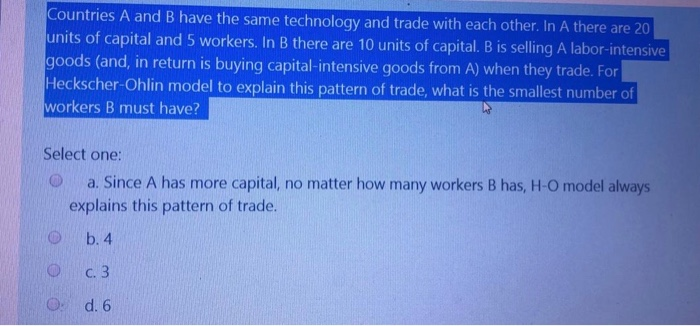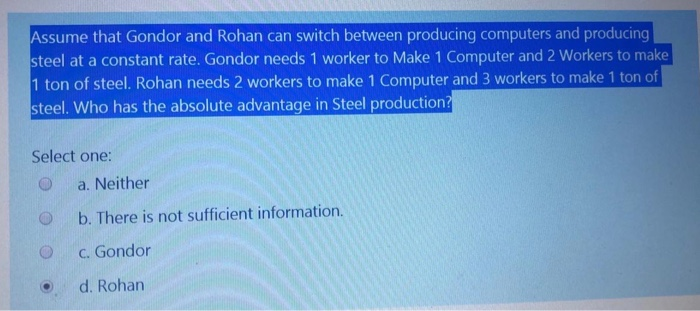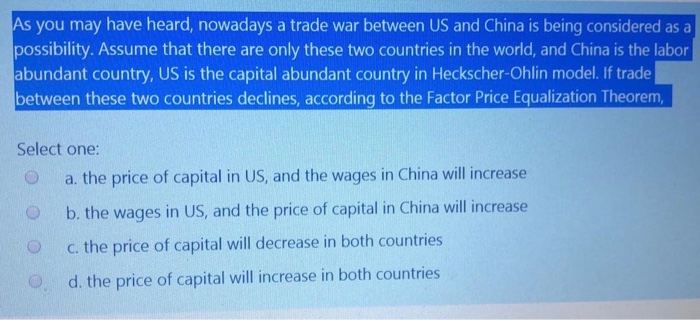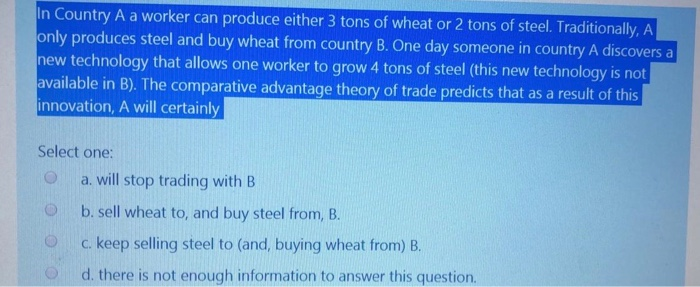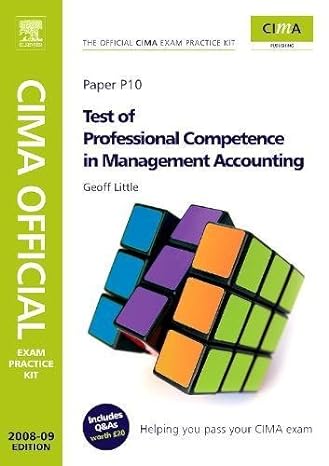Countries A and B have the same technology and trade with each other. In A there are 20 units of capital and 5 workers. In B there are 10 units of capital. B is selling A labor-intensive goods (and, in return is buying capital-intensive goods from A) when they trade. For Heckscher-Ohlin model to explain this pattern of trade, what is the smallest number of workers B must have? Select one: a. Since A has more capital, no matter how many workers B has, H-O model always explains this pattern of trade. b.4 C. 3 O d. 6 Assume that Gondor and Rohan can switch between producing computers and producing steel at a constant rate. Gondor needs 1 worker to Make 1 Computer and 2 Workers to make 1 ton of steel. Rohan needs 2 workers to make 1 Computer and 3 workers to make 1 ton of steel. Who has the absolute advantage in Steel production? Select one: a. Neither b. There is not sufficient information. O C. Gondor d. Rohan As you may have heard, nowadays a trade war between US and China is being considered as a possibility. Assume that there are only these two countries in the world, and China is the labor abundant country, US is the capital abundant country in Heckscher-Ohlin model. If trade between these two countries declines, according to the Factor Price Equalization Theorem, Select one: O a. the price of capital in US, and the wages in China will increase b. the wages in US, and the price of capital in China will increase O c. the price of capital will decrease in both countries d. the price of capital will increase in both countries In Country A a worker can produce either 3 tons of wheat or 2 tons of steel. Traditionally, A only produces steel and buy wheat from country B. One day someone in country A discovers a new technology that allows one worker to grow 4 tons of steel (this new technology is not available in B). The comparative advantage theory of trade predicts that as a result of this innovation, A will certainly Select one: O a. will stop trading with B b. sell wheat to, and buy steel from, B. c. keep selling steel to (and, buying wheat from) B. d. there is not enough information to answer this
